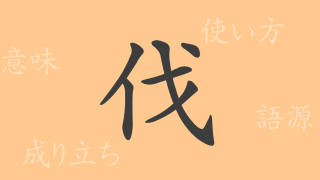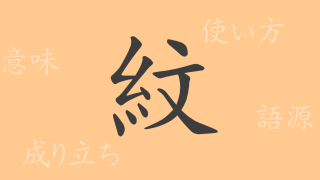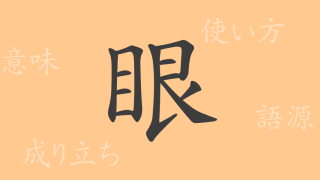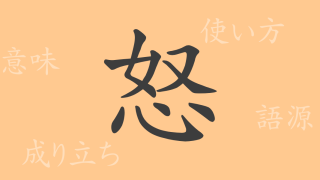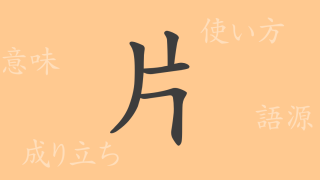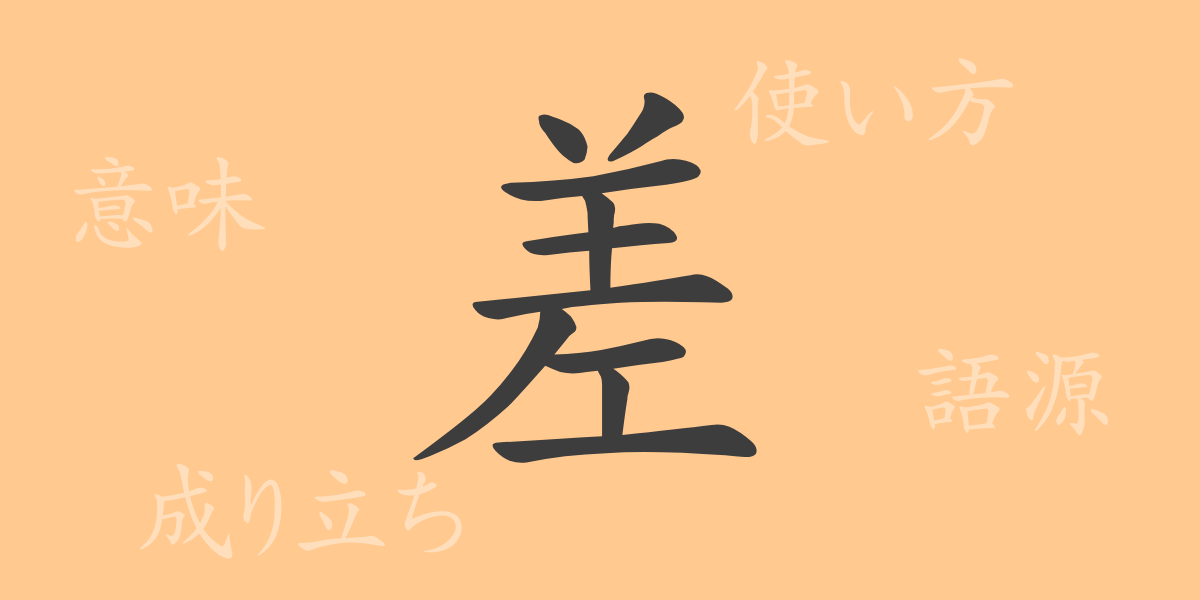The meaning and allure of a single kanji character are deeply rooted in its shape and history. One of the common kanji characters in the Japanese language is “差(さ),” which, although frequently used in daily life, extends its usage from mathematics to social phenomena. This article explores the world of “差(さ),” delving into its origins, meanings, usage, readings, stroke count, and radical, as well as examining idioms and proverbs that incorporate this character to reveal its rich expressive power and background.
Origins of 差(さ)
The kanji “差(さ)” originates from the ancient Chinese script “Small Seal Script (小篆(しょうてん))”. It is believed to have evolved from pictograms representing a hand taking something. Over time, this character came to signify actions like “insert” or “offer” and further extended to concepts of comparison, distinction, and difference.
Meanings and Usage of 差(さ)
The kanji “差(さ)” encompasses various meanings. Primarily, it denotes “difference” or “disparity,” but it can also mean “mistake” or “error.” As a verb, it is used in phrases like “差し出す(さしだす)” (to offer) and “差し引く(さしひく)” (to deduct). While its usage varies by context, it consistently involves scenarios of comparison or evaluation.
Readings, Stroke Count, and Radical of 差(さ)
The kanji “差(さ)” is a fundamental character taught early in Japanese education. Here are the basic details:
- Readings: The on’yomi (音読み) is “サ(さ),” and the kun’yomi (訓読み) includes “さ.す” and “さ.し”.
- Stroke count: “差(さ)” has a total of 10 strokes.
- Radical: The radical is “工(こう),” combined with “羊(ひつじ)” on the right side.
Idioms, Phrases, and Proverbs Using 差(さ)
The idioms, phrases, and proverbs that include “差(さ)” showcase the richness of Japanese expression. For example, “差し支えない(さしつかえない)” means “no problem” or “it’s okay,” while “差別(さべつ)” refers to discrimination or unfair treatment. “年の差(としのさ)” indicates an age difference, and “差し引く(さしひく)” means to deduct or consider disadvantages in comparison. These expressions are used in various contexts, adding nuanced meaning to Japanese communication.
Conclusion on 差(さ)
The kanji “差(さ)” plays a crucial role in Japanese communication through its associations with actions and concepts of comparison. Its diverse meanings and usages reflect the culture and history behind the language, making it an intriguing subject for learners of Japanese. This article aims to deepen your understanding of “差(さ)” and how it is used in the Japanese language, showcasing the depth and richness of this single character.










